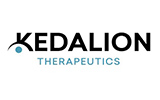
A car fuel temperature sensor is basically a component that tells your engine control unit (ECU) to adjust the amount of fuel it injects. The fuel temperature sensor (FTS) is designed to measure the temperature of the vehicle's fuel and communicate this information to the engine control unit to optimize the air-fuel ratio mixing ratio based on the fuel temperature relative to the fuel temperature. Intake air temperature.
The Automotive Fuel Temperature Sensor market revenue was xx Million USD in 2016, grew to xx Million USD in 2020, and will reach xx Million USD in 2026, with a CAGR of xx during 2020-2026.
Global Automotive Fuel Temperature Sensor Market Development Strategy Pre and Post COVID-19, by Corporate Strategy Analysis, Landscape, Type, Application, and Leading 20 Countries covers and analyzes the potential of the global Automotive Fuel Temperature Sensor industry, providing statistical information about market dynamics, growth factors, major challenges, PEST analysis and market entry strategy Analysis, opportunities and forecasts. The biggest highlight of the report is to provide companies in the industry with a strategic analysis of the impact of COVID-19. At the same time, this report analyzed the market of leading 20 countries and introduce the market potential of these countries.
Major Players in Automotive Fuel Temperature Sensor market are:
AB Elektronik Sachsen
Aptiv
Ohizumi
Fuji Kohgyo
Shibaura Electronics
LS Automotive
Cable Technica
Inzi Controls
Tohoku Shibaura Electronics
Most important types of Automotive Fuel Temperature Sensor products covered in this report are:
Analog Sensor
Digital Sensor
Most widely used downstream fields of Automotive Fuel Temperature Sensor market covered in this report are:
Passenger Cars
Commercial Vehicles
Top countries data covered in this report:
United States
Canada
Germany
UK
France
Italy
Spain
Russia
China
Japan
South Korea
Australia
Thailand
Brazil
Argentina
Chile
South Africa
Egypt
UAE
Saudi Arabia
Chapter 1 is the basis of the entire report. In this chapter, we define the market concept and market scope of Automotive Fuel Temperature Sensor, including product classification, application areas, and the entire report covered area.
Chapter 2 is the core idea of the whole report. In this chapter, we provide a detailed introduction to our research methods and data sources.
Chapter 3 focuses on analyzing the current competitive situation in the Automotive Fuel Temperature Sensor market and provides basic information, market data, product introductions, etc. of leading companies in the industry. At the same time, Chapter 3 includes the highlighted analysis--Strategies for Company to Deal with the Impact of COVID-19.
Chapter 4 provides breakdown data of different types of products, as well as market forecasts.
Different application fields have different usage and development prospects of products. Therefore, Chapter 5 provides subdivision data of different application fields and market forecasts.
Chapter 6 includes detailed data of major regions of the world, including detailed data of major regions of the world. North America, Asia Pacific, Europe, South America, Middle East and Africa.
Chapters 7-26 focus on the regional market. We have selected the most representative 20 countries from 197 countries in the world and conducted a detailed analysis and overview of the market development of these countries.
Chapter 27 focuses on market qualitative analysis, providing market driving factor analysis, market development constraints, PEST analysis, industry trends under COVID-19, market entry strategy analysis, etc.
Key Points:
Define, describe and forecast Automotive Fuel Temperature Sensor product market by type, application, end user and region.
Provide enterprise external environment analysis and PEST analysis.
Provide strategies for company to deal with the impact of COVID-19.
Provide market dynamic analysis, including market driving factors, market development constraints.
Provide market entry strategy analysis for new players or players who are ready to enter the market, including market segment definition, client analysis, distribution model, product messaging and positioning, and price strategy analysis.
Keep up with international market trends and provide analysis of the impact of the COVID-19 epidemic on major regions of the world.
Analyze the market opportunities of stakeholders and provide market leaders with details of the competitive landscape.
Years considered for this report:
Historical Years: 2016-2020
Base Year: 2020
Estimated Year: 2021
Forecast Period: 2021-2026
























